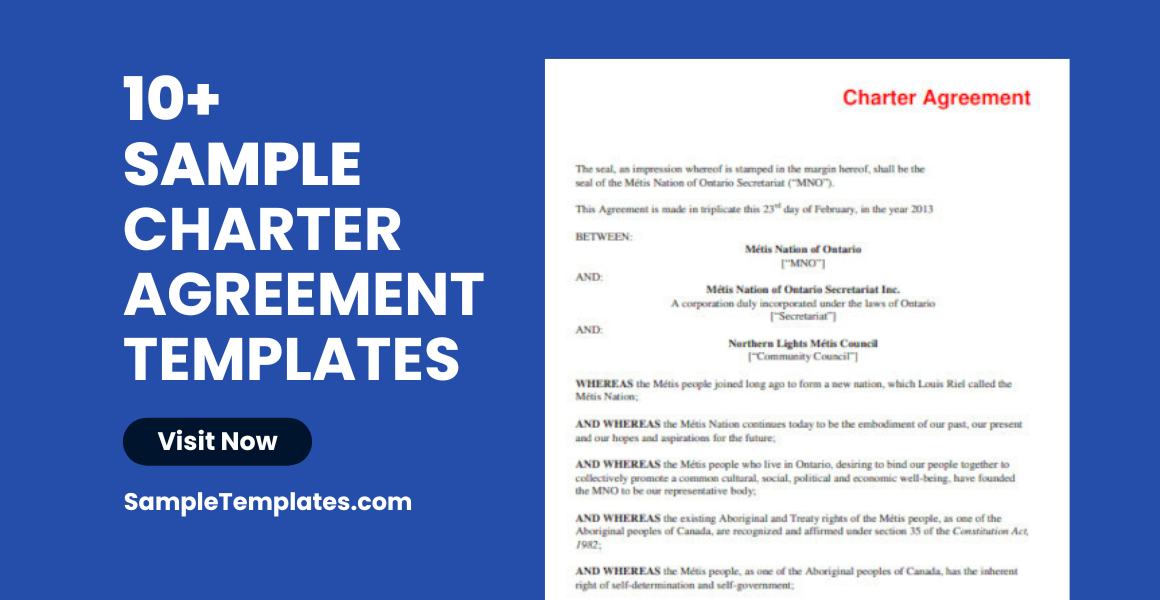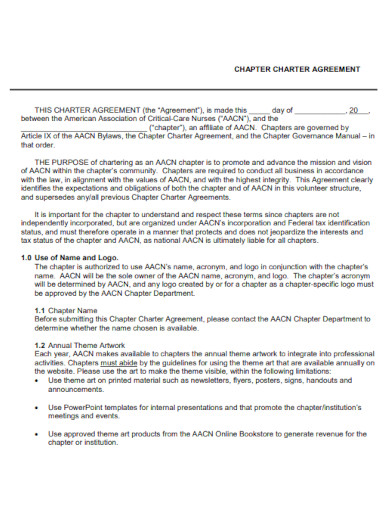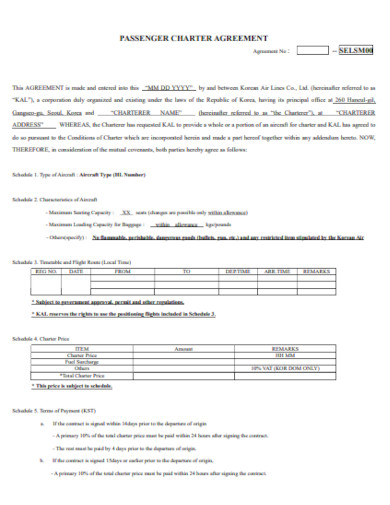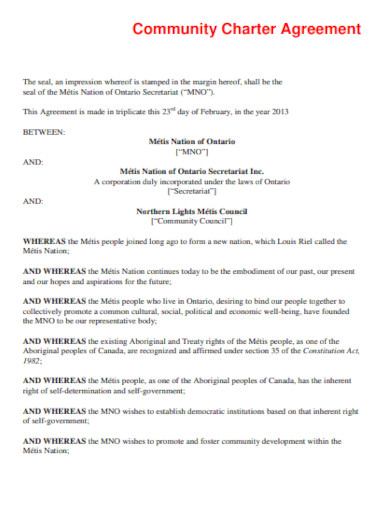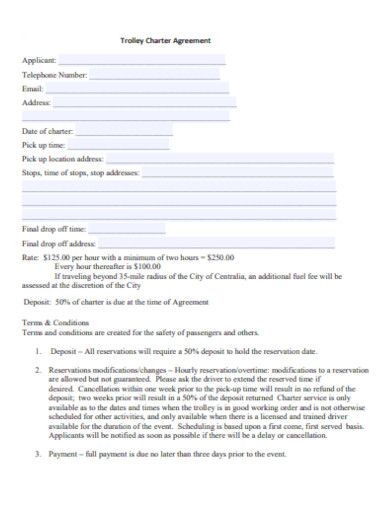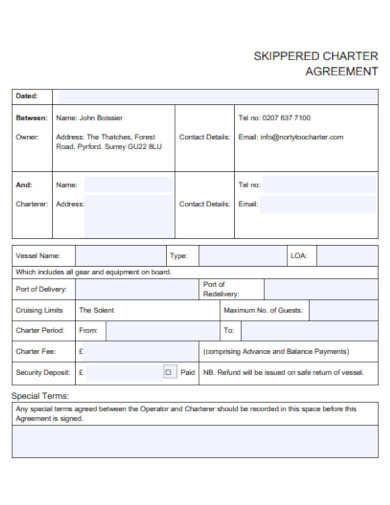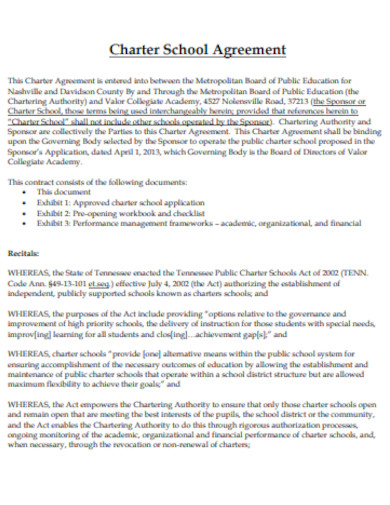10+ Charter Agreement Samples
1. Sample Yacht Charter Agreement Template
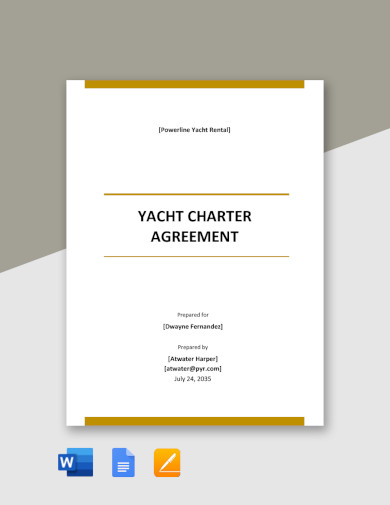
2. Sample Aircraft Charter Agreement Template
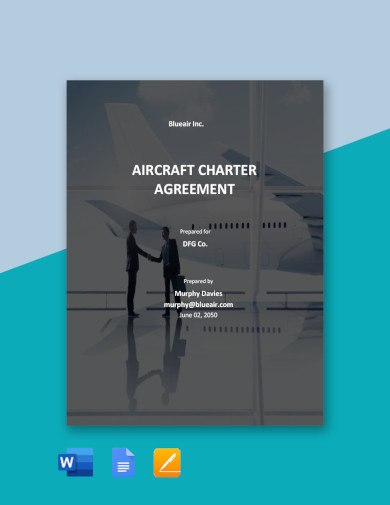
3. Sample Boat Charter Agreement Template
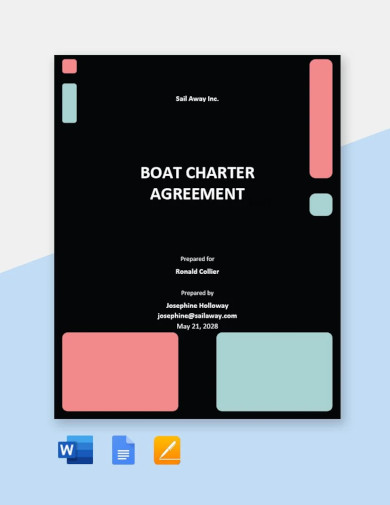
4. Sample Charter Party Agreement Template
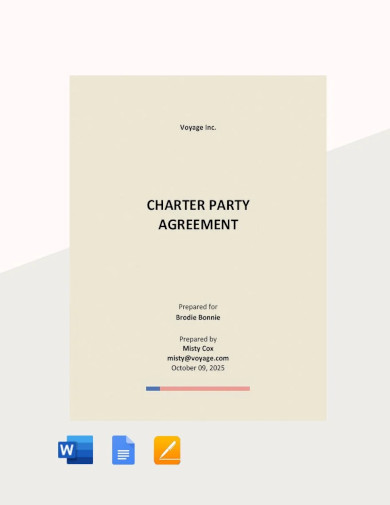
5. Sample Team Charter Agreement Template
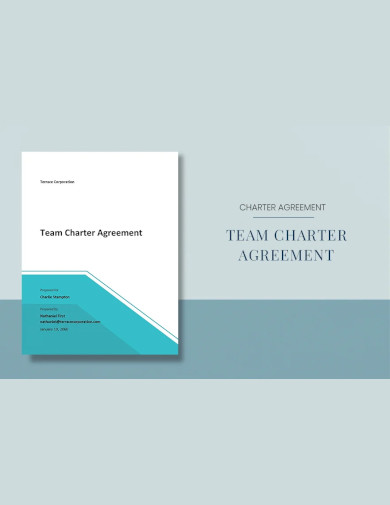
What is a Charter Agreement?
6. Sample Chapter Charter Agreement Template
7. Sample Passenger Charter Agreement Template
8. Sample Community Charter Agreement Template
9. Sample Trolley Charter Agreement Template
10. Sample Skippered Charter Agreement Template
11. Sample Charter School Agreement Template
How to Create a Charter Agreement?
Creating a charter agreement, a vital document in the shipping, aviation, and transportation industries, involves several key steps. This process ensures that all necessary details are covered, providing a clear and legally binding contract between the vessel or vehicle owner and the charterer. Here’s a step-by-step guide:
1. Identify the Type of Charter
First, determine the type of charter agreement needed:
- Time Charter: Renting the vessel for a specific time period.
- Voyage Charter: Hiring the vessel for a single voyage.
- Bareboat Charter: Charterer has full control over the vessel for the charter duration.
2. Gather Necessary Information
Collect all relevant information, including:
- Details of the vessel or vehicle (name, size, capacity).
- Information about the owner and charterer.
- Duration of the charter or specifics of the voyage.
- Financial terms, including charter rates and payment schedules.
3. Draft the Agreement
Create a draft of the agreement, ensuring it includes:
- Parties Involved: Clearly identify the owner and the charterer.
- Description of the Vessel/Vehicle: Include specifics like type, size, and capacity.
- Charter Period: Specify the duration or the details of the voyage.
- Financial Terms: State the charter fee, payment terms, and other financial obligations.
- Operational Control: Define who is responsible for operations, maintenance, and crew management.
- Liabilities and Insurance: Outline responsibilities for damages, losses, and insurance requirements.
- Compliance and Safety: Ensure clauses for adherence to safety standards and regulatory compliance.
- Dispute Resolution: Include terms for handling disputes, possibly through arbitration or legal proceedings.
- Termination Clauses: Detail conditions under which the charter can be terminated. You can also see more templates like Charter Samples.
4. Review Legal Compliance
Ensure that the agreement complies with relevant laws and regulations. It’s advisable to consult legal experts specializing in maritime, aviation, or transportation law.
5. Negotiation and Amendments
Discuss the draft with the other party. Be open to negotiations and make amendments as agreed upon by both parties.
6. Finalize and Sign the Agreement
Once both parties agree on the terms, finalize the document. Ensure that it is signed by authorized representatives of both the owner and the charterer.
7. Keep Records and Manage Compliance
Maintain a signed copy of the agreement for record-keeping. Throughout the charter period, manage operations in compliance with the agreement’s terms.
What is the Purpose of the Charter Party Agreement?
A charter party agreement, often simply referred to as a charter agreement, is a critical document in the shipping industry. This contract serves several key purposes, each of which is essential for the smooth operation of maritime trade and transportation.
Who Bears the Operational Costs in a Charter Agreement?
This depends on the type of charter:
- In a time charter, the owner typically covers operational and maintenance costs.
- In a voyage charter, the charterer usually pays for the voyage costs.
- In a bareboat charter, the charterer bears all operational and maintenance costs.
Are Charter Agreements Legally Binding?
Yes, charter agreements are legally binding contracts, enforceable under the relevant jurisdiction’s laws.
How are Charter Rates Determined?
Charter rates are influenced by various factors, including the type of charter, market demand, vessel size and type, duration of the charter, and prevailing market conditions.
In conclusin, Charter agreements are essential in the transportation industry, providing a framework for the temporary transfer of a vessel or vehicle from its owner to a charterer. These agreements must be carefully crafted to ensure clarity, legal compliance, and protection for both parties involved. Understanding the nuances of different types of charters and the key elements of these agreements is crucial for successful and mutually beneficial arrangements. You can also see more templates like Charter Document Samples.
